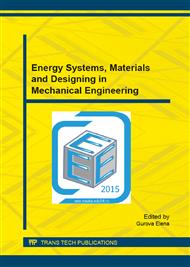[1]
M.W. Barsoum, T. El-Raghy, The MAX phases: unique new carbide and nitride materials, American Scientist, 89 (2001) 334–343.
DOI: 10.1511/2001.28.736
Google Scholar
[2]
S. Myhra, J.W.B. Summers, E. H Kisi, Ti3SiC2-A layered ceramic exhibiting ultra-low friction, Materials Letters, 39 (1999) (1) 6–11.
DOI: 10.1016/s0167-577x(98)00206-7
Google Scholar
[3]
A new compound reduces contact wear (R&D digest), ABB Review, 1 (2004) 64-66.
Google Scholar
[4]
H. Li, L.M. Peng, M. Gong, L.H. He, J.H. Zhao, Y.F. Zhang, Processing and microstructure of Ti3SiC2 / M (M = Ni or Co) composites, Materials Letters, 59 (2005) 2647–2649.
DOI: 10.1016/j.matlet.2005.04.010
Google Scholar
[5]
D. Shan, G. Yan, L. Zhou, L. Chengshan, J. Li, G. Liu, J. Feng, Synthesis of Ti3SiC2 bulks by infiltrating method, Journal of Alloys and Compounds, 509 (2011) 3602-3605.
DOI: 10.1016/j.jallcom.2010.12.092
Google Scholar
[6]
S.S. Hwang, S.C. Lee, J.H. HanD. Lee, S. -W. Park, Machinability of Ti3SiC2 with layered structure synthesized by hot pressing mixture of TiCx and Si powder, Journal of the European Ceramic Society, 32 (2012) 3493-3500.
DOI: 10.1016/j.jeurceramsoc.2012.04.021
Google Scholar
[7]
R. Pampuch, J. Lis, L. Stobierski, M. Tymkiewicz, Solid combustion synthesis of Ti3SiC2, Journal of the European Ceramic Society, 5 (1989) 283–287.
DOI: 10.1016/0955-2219(89)90022-8
Google Scholar
[8]
B.Y. Liang, M.Z. Wang, J.F. Sun, X.P. Li, Y.C. Zhao, X. Han, Synthesis of Ti3SiC2 in air using mechanically activated 3Ti/Si/2C powder, Journal of Alloys and Compounds, 474 (2009) L8–L21.
DOI: 10.1016/j.jallcom.2008.06.147
Google Scholar
[9]
F. Meng, B. Liang, M. Wang, Investigation of formation mechanism of Ti3SiC2 by self-propagating high-temperature synthesis, International Journal of Refractory Metals and Hard Materials, 41 (2013) 152–161.
DOI: 10.1016/j.ijrmhm.2013.03.005
Google Scholar
[10]
A.P. Amosov, E.I. Latukhin, D.M. Davydov, The influence of gas atmosphere composition on formation of surface films in self-propagating high-temperature synthesis of porous Ti3SiC2, Modern Applied Science, 9 (2015) 3, 17-24.
DOI: 10.5539/mas.v9n3p17
Google Scholar
[11]
X. He, Y. Bai, Y. Li, C. Zhu, X. Kong, In situ synthesis and mechanical properties of bulk Ti3SiC2/TiC composites by SHS/PHIP. Materials Science and Engineering, A 527 (2010) 4554–4559.
DOI: 10.1016/j.msea.2010.04.006
Google Scholar
[12]
M.W. Barsoum, T. El-Raghy, Synthesis and characterization of a remarkable ceramic – Ti3SiC2, Journal of the American Ceramic Society, 79 (1996) 1953–(1956).
DOI: 10.1111/j.1151-2916.1996.tb08018.x
Google Scholar
[13]
T. El-Raghy, M.W. Barsoum, A. Zavaliangos, S.R. Kalidindi, Processing and mechanical properties of Ti3SiC2. II: Effect of grain size and deformation temperature, Journal of the American Ceramic Society, 82 (1999) 2855–2860.
DOI: 10.1111/j.1151-2916.1999.tb02167.x
Google Scholar


